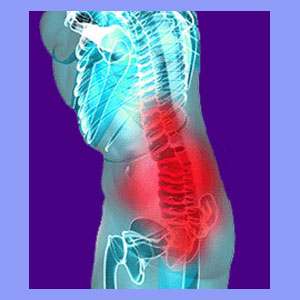
Sciatica and hemorrhoids do not seem like similar conditions, but statistics show that they are related in many patient profiles. Worse still, there is more than one reason why the 2 problems might exist concurrently, making diagnostic evaluation difficult.
Hemorrhoids are a very common and often agonizing health issue, causing pain, itching and burning in the rectal area. Since this area of the body is served by the lower sacral nerve roots, there are many spinal conditions that can cause sciatica, as well as contribute to the incidence of hemorrhoids. Furthermore, some patients might actually cause their hemorrhoids through certain behaviors that are developed to better cope with the pain of their chronic sciatica.
This treatise examines the relationship between hemorrhoids and sciatica, including neurological, behavioral and mindbody causations.
Neurological Sciatica and Hemorrhoids
True sciatica is caused by a neurological compression condition in the lower spinal regions. This source process varies greatly, but always involves one or more of the crucial neurological roots that eventually form the complete sciatic nerve.
The middle and lower sacral nerves are often victimized by this compressive process, especially in cases of lower lumbar central spinal stenosis. In these instances, the cauda equina structure is typically impinged upon as a grouping, compressing several neurological roots and creating a diversity of dysfunction.
We know that nerve compression can lead to sciatica. However, many patients do not realize that impingement on these mid to low sacral nerves also can cause incontinence, constipation, sexual dysfunction and other problems affecting the genitals, bladder, intestines and rectum.
A common consequence of rectal dysfunction is hemorrhoids, since the nerves do not supply the digestive system with the correct signals to ensure proper functionality. In essence, the rate of digestion might be faster than normal and incomplete, which can result in chronic diarrhea. Alternately, the rate of digestion can be slow, resulting chronic constipation. Either of these scenarios can set the ideal tone for hemorrhoids to develop.
Patients who suffer digestive difficulties, constipation or diarrhea due to innervation problems must be proactive in order to stay free of hemorrhoids. It is advised to speak to a physician about effective treatment options that might be able to better regulate the digestive cycle as a preventative measure.
Hemorrhoids and Chronic Pain from Behavior Patterns
Many patients who endure recurrent sciatica develop chronic tightness and tension in the affected muscles. These areas include the lower back, buttocks, saddle region, legs and feet. Patients often feel the need to flex and tighten these muscles regularly. Patients with some severe expressions of sciatica often clench the buttocks tightly in order to better support themselves while standing, sitting, walking or performing physical activity. In most cases, this is an unconscious mechanism that develops as a coping strategy for never-ending pain. However, this constant clenching can create friction around the anus, once again inciting hemorrhoids to begin, worsen or become acutely thrombosed.
Patients must be mindful that clenching the buttocks can lead to rectal problems. Therefore, they must learn to relax, even when sciatica pain is fierce and would normally force them to tighten down on the painful regions.
Mindbody Sciatica and Hemorrhoids
Mindbody processes can also cause both sciatica and hemorrhoids to develop. In some patients, one condition might be anatomically-motivated, while the other is purely or partially psychogenic. In other patients, one condition is anatomically motivated, while the other is a direct mindbody reactionary consequence of the first condition. In still other patients, both conditions are generated by the mind interacting with the body, usually as a reaction to suppressed or repressed emotional troubles, best represented by tension myoneural syndrome.
Patients who suffer from mindbody sciatica rarely find relief from traditional care methods. Likewise, patients who endure chronic psychogenic hemorrhoids also find that their tormentor typically defies successful treatment.
Some patients eventually have one or both conditions resolve, only to suffer some other psychosomatic expression in the anatomy. Meanwhile other patients might find lasting cures for one or both conditions through recognition of the causative mindbody factors and the implementation of psychoemotional interventions, such as knowledge therapy.





